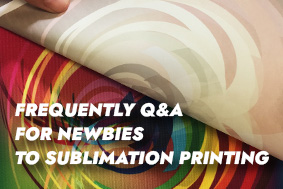Over the past year, there have been some exciting developments related to digital textile printing for the apparel industry. Globally, over 30 billion meters of printed fabric were produced, with 5% being produced digitally. There is still significant growth potential in the digital textile printing market.
With a focus on fashion, here are my top four technologies and trends driving innovation in 2017:
Textile Printing with the Epson PrecisionCore
In February 2017, I had to chance to visit the Epson-Robustelli production factory in Como, Italy to see the first Monna Lisa Evo Tre digital textile printers being built for customers.
Using PrecisionCore inkjet printheads, the latest generation inkjet printing technology from Epson, the Evo Tre printers designed by Robustelli have quickly set a new standard for high productivity and quality.
The PrecisionCore printheads feature micron thick piezo-electric crystals, which are a hundredth of a human hair thick, resulting in a higher density of print nozzles and smaller ink drop sizes for fine photographic details.
The printer also has an impressive print speed of up to 650 m2/h and is capable of printing up to 8 colours with acid, reactive, disperse or pigments inks. For designers wanting the highest quality in textile printing, the Monna Lisa Evo Tre will lead the industry for high-end fashion applications.
Single Pass Textile Printing Takes Off
More single pass high speed textile printers continued to be installed around the world in 2017, including several installs in Portugal, Turkey and China in particular. We are seeing more specialization happening beyond sublimation and pigment applications, with several new single pass printers coming online using reactive and acid inks in the past year.
Productivity is also rapidly increasing. For example, since installing a single pass SPGPrints PIKE printer in July 2017, Dongheng Group in China is able to produce 30,000 meters of printed cotton fabric in one shift. For a further overview of this technology, check out my article: Zero to 60. Single pass digital textile printers accelerate production.
The next challenge for single pass textile printing is handling variable data printing for mass customization. Further developments in this area will probably be made public in time forITMA 2019 or sooner.
Garment Design to Textile Print in a Click
Several major garment design CAD software firms have released print file output features, allowing designers to print out panels of virtually created 3D objects directly onto fabric, which can then be cut & sewn.
This is a new feature that was released this year in garment design software from Gerber, EFI Optitex, Browzwear, Tukatech and Clo3D, resolving clunky work-around methods that designers previously had to create.
More information can be found in my article: The Future of Textile Design is 3D.
Neon Inks
The last major neon fluorescent color fashion trend was in 2014, but perhaps we will see a resurgence in 2018 with ‘near neon’ colors.
Perfectly timed to meet the demand are neon NeoPigment Intenso inks, released fall 2017, from Kornit Digital for their direct-to-fabric Allegro textile printers. The prior year, and Mimaki also launched fluorescent inks for sublimation printing, heavily focusing sports and teamwear apparel applications.
Once designers understand the color palette potential of fluorescent colors mixed with CYMK+ inks, expect to see more bright and colorful textile prints hitting the runways in the coming seasons
if you want to konw more www.subtextile.com
[email protected]
 Easy-to-Design Mother's Day Gift Ideas
Easy-to-Design Mother's Day Gift Ideas
 Frequently Q&A for Newbies to Sublimation Printing
Frequently Q&A for Newbies to Sublimation Printing
 Choose sublimation paper? Focus on quality over price
Choose sublimation paper? Focus on quality over price
 7 Factors To Consider Before Choosing A Digital Textile Printer
7 Factors To Consider Before Choosing A Digital Textile Printer